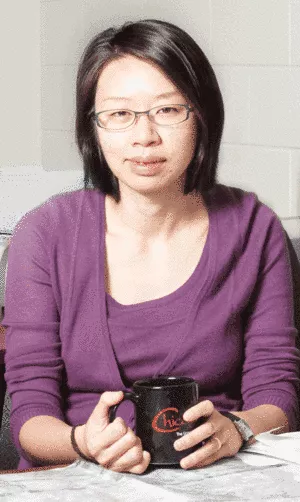
Alice Yao

And the list of problems associated with the work is significant. Identifying the most plentiful excavation site, bureaucratic obstacles in conjunction with removing cultural relics from China, and methodological and theoretical complexities are just a few examples of the complications associated with Yao’s research into early forms of imperialism and colonialism. The matter of land, though, seems to be the most contentious point. Firstly, the Yunnan area where Yao works is a border region, which often carries political sensitivities around cultural identity, and also might not turn up high profile relics, such as chunks of the Great Wall or terracotta warriors, so that it isn’t as meticulously managed.

Secondly, a land developer and an anthropologist differ on their definitions of territorial riches. Since the society Yao studies did not have a written tradition, the material and artifacts she finds helps her to further piece together the details surrounding this particular civilization, making the preservation of the land and its hidden treasures all the more momentous. “Right now there is such dramatic land development going on, that most local governments and farmers do not understand that cultural heritage is something that is intrinsic to the preservation of space and of identity,” says Yao. “When land is worth so much money and people’s livelihoods are wrapped up in the current industrial leap, but what they are doing to the landscape is environmental degradation.”
Though Yao faces frustrations in her work dealing with land developers in China and regulatory policies that make it difficult to bring cultural relics to Canada for analysis, she is no stranger to impediments when it comes to getting at what she wants. After graduating with a degree in anthropology from the University of Chicago, she worked in publishing for an academic press – a job she found to be less than satisfying – so Yao decided to take a trip to China to get some clarity and explore her life options. Although Yao grew up in Massachusetts, she was born in Taiwan and could speak the language, and so a trip to China seemed to be a natural choice.
Rather disappointingly, Yao’s trip to Yellow River was not the experience she was hoping for and did not provide any answers to her personal quest. However it was a journey to the southern region of China, where she did not speak the language that ended up being a revelation for Yao. “I found it much more interesting to me in terms of traditional-life ways that hadn’t been completely bulldozed, and I just felt like people had more intimate ties with each other and villages than what I had seen elsewhere,” says Yao. “And furthermore, I couldn’t understand what anyone was saying, so I didn’t have all this background noise, trying to figure out and interpret what other people really meant. So not understanding what was going on kind of made it a more exciting environment to do research in.”

With this new discovery, Yao, who had been contemplating graduate school prior to her trip, returned to the U.S. to pursue her Master’s and doctorate in archaeology at the University of Michigan. She has since done research in India and Mexico, but has mainly focused her efforts on the territory bordering Tibet, Vietnam and Burma. This Southeast Asian region, which has been referred to as the “Golden Triangle” and the southern “Silk Road,” provided access for trade and communication between India and China during the Han Empire. This is the period just prior to the Chinese rule overtaking the area in 1st Century B.C., and marks a significant time in China’s history because the empire ultimately incorporated regions from Korea to parts of central Asia and south into Vietnam. Part of Yao’s focus also deals with the fact that “concepts of ethnicity and statehood” were fairly abstract notions in terms of defining large nations, multiculturalism and individuals.
Ultimately Yao has great aims for her research, which ideally will involve lots of students helping to identify and analyze the finds, and possibly incorporate more computer-based tools such as Geographic Information Systems (GIS), to give a better sense of the archaic landscape. Yao also hopes to establish a long-term, collaborative relationship with her Chinese colleagues, and a sustained impact within the society so there is a rejuvenated appreciation for the past. “What I hope to contribute will likely affect what goes on in China in the years to come, primarily in the conservation of cultural relics, which has direct relevance to economic development,” expresses Yao. “It is not just one or the other dichotomy. Cultural heritage can become a separate economic incentive for development, and so preserving the ancient landscape is itself a promotion of local interests.”
